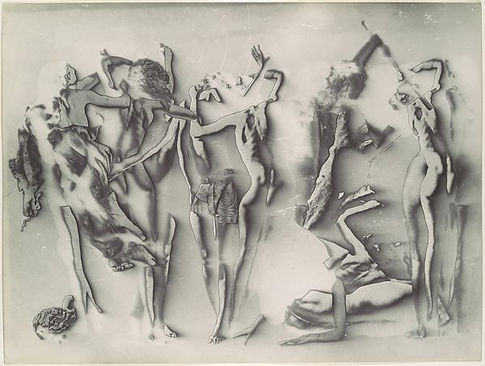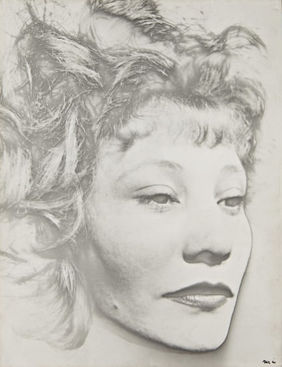For my further artistic practice I would like research the accelerating effect the implementation of digital technology and algorithms has on an individual.
For my further artistic practice I would like research the accelerating effect the implementation of digital technology and algorithms has on an individual.
Artworks and Processes
Artworks and Processes
Artworks and Processes
Artworks and Processes
Here is a heading
Ich bin ein Textabschnit. Klicke hier, um deinen eigenen Text hinzuzufügen und mich zu bearbeiten. Ich bin ein Textabschnitt. Klicke hier, um deinen eigenen Text hinzuzufügen und mich zu bearbeiten.Ich bin ein Textabschnitt. Klicke hier, um deinen eigenen Text hinzuzufügen und mich zu bearbeiten.Ich bin ein Textabschnitt. Ich bin ein Textabschnitt. Klicke hier, um deinen eigenen Text hinzuzufügen und mich zu bearbeiten. Ich bin ein Textabschnitt. Klicke hier, um deinen eigenen Text hinzuzufügen und mich zu bearbeiten.Ich bin ein Textabschnitt. Klicke hier, um deinen eigenen Text hinzuzufügen und mich zu bearbeiten.Ich bin ein Textabschnitt.
Here is a heading
Ich bin ein Textabschnit. Klicke hier, um deinen eigenen Text hinzuzufügen und mich zu bearbeiten. Ich bin ein Textabschnitt. Klicke hier, um deinen eigenen Text hinzuzufügen und mich zu bearbeiten.Ich bin ein Textabschnitt. Klicke hier, um deinen eigenen Text hinzuzufügen und mich zu bearbeiten.Ich bin ein Textabschnitt. Ich bin ein Textabschnitt. Klicke hier, um deinen eigenen Text hinzuzufügen und mich zu bearbeiten. Ich bin ein Textabschnitt. Klicke hier, um deinen eigenen Text hinzuzufügen und mich zu bearbeiten.Ich bin ein Textabschnitt. Klicke hier, um deinen eigenen Text hinzuzufügen und mich zu bearbeiten.Ich bin ein Textabschnitt.
Raoul Ubac

© Raoul Ubac
“I would wish a state of innocence which would reflect through the work the magnificence of the world.”
– Raoul Ubac
non-representational photographs
burnings / solarisation
creative powers of the subconscious
landscape of dreams
distortion of appearances
rupture in the surface of perceived reality
convulsive beauty
brûlages
material diminishes and, in a random but controlled way, creates a new shape
the body as formlessness
pictorial visual perception released from the influence of literary record
Raoul Ubac was active in the Surrealist movement during the late 1930s. His deliberately non-representational photographs appeared frequently in the Surrealist publication "Minotaure," alongside photographs by Brassaï, Boiffard, and Atget, as accompaniment to texts by Breton and other Surrealist poets. The "Minotaure" published his photos-reliefs (solarisation) and his so called "burnings" developed his art towards the lyric abstraction. Raoul Ubac’s commitment in his art is total, almost religious; his way got simplified, finding little by little the very pure way of the primitive arts. (Gallery MC; KM Johnson Gallery)
Burnings (solarisation)
Le Combat des Penthésilées 1937, printed later
The creative powers of the subconscious
The Surrealists aimed to tap the creative powers of the subconscious which led them through a landscape of dreams, chance, sexual fantasy, and madness. Even though photography is essentially a realist medium it possesses the power to distort appearances. The surrealists especially appreciated its unique ability to force a rupture in the surface of perceived reality. (KM Johnson Gallery)
“Convulsive beauty, Breton's term for this abrupt encounter with the subconscious, became the group's elusive, aesthetic ideal” (KM Johnson Gallery).
Convulsive beauty
The best term to describe this relationship is “convulsive beauty,” a phrase that appears in André Breton's novel Nadja (1928) as well as in Mad Love (1937), and refers to surrealism's dedication to exhibiting disturbing upheavals in psychological coherence at the level of the individual mind or social body (…) convulsive beauty describes a surrealist method for presenting the impact that restrictive social mores made on the human psyche through visual and literary depictions of shocking psychological regressions that result in transgressive behaviours. As a subject matter for art, it demonstrates the surrealist commitment to compromise traditional aesthetics by shocking audiences with a range of unspeakable human expressions (…) As I argue, however, surrealist representations of convulsive beauty can also be interpreted and understood in terms of gender and sexual difference evident in Freudian theories about human sexuality. (…) The simulations of hysteria and the projections of a deviant female sexuality introduced by Cahun and Barnes in these works suggest that these women rejected the theories and images that reinforce the categorization of women as the weaker sex in surrealism, as hysterics more likely to exhibit failed sublimations and as bodies less likely to embody the aggressiveness needed to perform more sexually transgressive acts. (Hutchison, pp. 212-226)
Fossil objects
.jpeg)


Burning/melting the negative

© Raoul Ubac, The Nebular 1939

© Raoul Ubac, The Reverse of the Face 1939
"Besides collage and solarization, another technique used by Raoul Ubac was that of (brûlages) burning/melting the negative. In 1939 Raoul Ubac intentionally degraded his own work. The exposed negatives were subjected to a heat source (hot water) at which point the material diminishes and, in a random but controlled way, creates a new shape.
This technique was also used in creating the image of La Nébuleuse. (...) In this image, Raoul Ubac presents the woman’s body as formlessness. The use of this procedure shows the manipulation of photography in his hands with the limit of his own imagination, referring to Freud’s theories about the uncanny and the subconscious.
Passed through the procedure that suggests traces of fire, the female body is has been subjected to transformation, disintegration. Ubac transforms pictorial visual perception by releasing it from the influence of literary record."
(Florea, 2020)


© Raoul Ubac, Portrait of the Artist
References
Gallery MC (n.a.) Raoul Ubac. Available at: https://www.mchampetier.com/biography-Raoul-Ubac.html (Accessed: 19 Aug 22)
Florea, M (2020) Raoul Ubac, La Nébuleuse, 1939. Availabel at: https://1908131monicaflorea341392939.wordpress.com/2020/06/10/raoul-ubac-la-nebuleuse-1939/ (Accessed: 19 Aug 22)
Hutchison, S (2003) Convulsive Beauty: Images of Hysteria and Transgressive Sexuality: Claude Cahun and Djuna Barnes.
Available at: https://muse.jhu.edu/article/48824#:~:text=The%20best%20term%20to%20describe,individual%20mind%20or%20social%20body (Accessed: 03.04.22)
KM; Johnson Gallery XXVI (n.a.) Portrait Dans un Miroir. Available at: https://www.metmuseum.org/art/collection/search/265064 (Accessed: 19 Aug 22)




